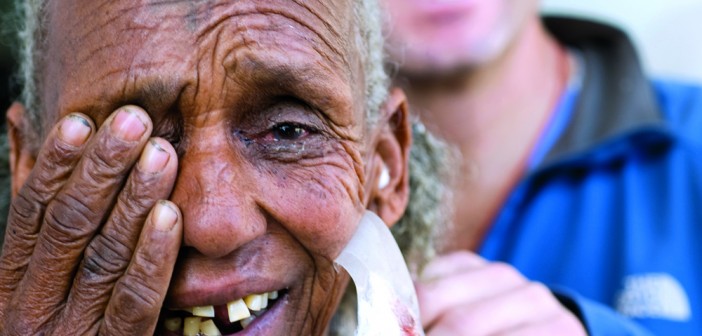An eye surgeon sets his sights on curing blindness.
Geoffrey Tabin, MD RES’93 has always aimed high. As one of the earliest climbers to reach the highest peak
on all seven continents, he counts Reinhold Messner and other mountaineering legends as his company.
But a goal he set 20 years ago is one he knows won’t be met in his lifetime. To Tabin, summiting Mount Everest has nothing on curing blindness worldwide.
Tabin found his true calling as a general doctor in Nepal. “I saw the miracle of cataract surgery,” he says. “Twenty million people can’t see fingers held up in front of their faces because of treatable cataracts. I saw these people were depressed and waiting to die—and this surgery was bringing them back to life. I also realized this surgery would be a challenge similar to climbing— that kind of focus. It was perfect for me.”
A ski vacation in Utah led to a chance encounter on a chairlift between his then-girlfriend and a retinal specialist from Providence. The doctor knew of an opening at Brown University and Tabin found himself on a next day flight to meet William Tsiaras, MD, director of the residency training program in ophthalmology.
The world traveler says Providence is among the most important places he’s been. “The residency gave me the attention I needed,” Tabin says. “We actually only had two residents a year. You received an amazing volume of experience, which helps when you consider the high volume you’ll come across in developing countries.”
Tabin eventually was mentored by and became a partner of the Nepali ophthalmologist Sanduk Ruit, MD, who taught him an inexpensive, sutureless cataract surgery for resource-poor settings. “He really originated showing doctors from these areas not just technique but an understanding of reimbursement,” Tabin says. “It made financial sense for more doctors to perform the surgery, and the number of blind people has gone down dramatically.”
According to Tabin, when he and Ruit started what became the Himalayan Cataract Project, in 1994, there was a backlog of 200,000 patients with cataracts, with 60,000 people going blind annually; Nepalese eye surgeons had the capacity to treat just 15,000 patients a year using older, more expensive, and labor- intensive techniques. “Last year, 275,000 surgeries were done,” Tabin says, “and it’s as good as cataract surgery in the United States. I can’t tell you just how much things are changing.”
What he can tell you is that eradicating blindness is a real possibility and one he won’t give up on. “We have to keep moving forward,” he says. “It’s sad how many people are blind who just don’t have to be.”
For a climber whose eyes have seen sights few have, Tabin realizes that the most important view is any at all.




